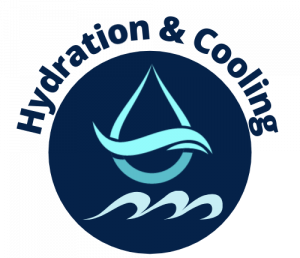Discover science-backed electrolyte replacement strategies that optimize football performance, prevent muscle cramps, and enhance recovery for athletes at all levels.
_______________________________
Electrolyte Replacement Strategies for Peak Football Performance
When football players push their bodies to the limit on hot summer days or during intense games, they lose more than just water. Every drop of sweat carries away crucial electrolytes – the minerals that keep muscles firing, nerves communicating, and performance at its peak. The difference between fourth-quarter fatigue and game-winning energy often comes down to smart electrolyte replacement. This guide breaks down the science of electrolyte balance and provides practical strategies that coaches and players can implement immediately to boost performance and reduce injury risk.
Understanding Electrolytes: The Performance Connection
Electrolytes are minerals that carry an electric charge when dissolved in body fluids. The major players – sodium, potassium, calcium, and magnesium – work together to regulate nerve and muscle function, hydration, blood pH, and rebuilding damaged tissue. During football practice or games, athletes can lose 700-1,500mg of sodium per hour through sweat, with losses significantly higher in hot, humid conditions.
When electrolyte levels drop too low, players experience a cascade of performance problems: muscle cramps strike without warning, reaction times slow, decision-making becomes clouded, and fatigue sets in prematurely. This isn’t just uncomfortable – it’s a competitive disadvantage that can determine game outcomes.
Signs Your Team Has an Electrolyte Problem
Football coaches should watch for these warning signs of electrolyte imbalance:
Muscle cramping, particularly in the calves and hamstrings, often signals sodium and potassium deficiency. Excessive fatigue that seems disproportionate to exertion level suggests depleted electrolyte stores. Mental fog, confusion about plays, or unusual decision-making indicates that electrolyte imbalance is affecting brain function. White, crusty salt stains on uniforms after practice reveal heavy sodium losses that need replacement.
Timing Is Everything: When to Replace Electrolytes
Effective electrolyte replacement isn’t just about what you consume, but when. Pre-hydration with electrolytes 2-3 hours before practices and games primes the body’s systems and establishes baseline reserves. During activity, players should consume electrolyte-containing fluids every 15-20 minutes, rather than waiting for thirst (which signals dehydration has already begun). The post-workout recovery window – within 30 minutes after activity – represents a critical opportunity to replenish lost minerals and jump-start recovery.
Customizing Electrolyte Strategies for Football Positions
Different positions have unique electrolyte needs based on their activity patterns. Linemen, who generate extreme power output in short bursts while wearing heavy equipment, typically sweat profusely and require higher sodium replacement. Defensive backs and wide receivers covering long distances need balanced formulations supporting sustained endurance. Quarterbacks need solutions that maintain mental clarity and fine motor control through precisely balanced electrolyte ratios.
Practical Implementation: Building Your Team’s Electrolyte Strategy
Establish a hydration station at practice with both water and electrolyte-containing beverages clearly labeled. Incorporate sports drinks with 400-700mg sodium per liter for moderate activity, switching to higher concentration formulations (700-1000mg/liter) during intense sessions or hot conditions. Consider salt tablets (with physician approval) for heavy sweaters who consistently show salt stains on uniforms. For two-a-day practices, implement mandatory electrolyte consumption between sessions to ensure complete recovery.
Remember that commercial sports drinks often contain unnecessary sugars and artificial ingredients. Many teams are switching to cleaner formulations that deliver electrolytes without performance-hindering additives. Some programs have found success with homemade solutions combining water, natural sea salt, potassium-rich fruit juice, and a touch of honey for rapid absorption.
Beyond Drinks: Comprehensive Electrolyte Sources
While beverages form the foundation of most electrolyte strategies, smart teams incorporate whole food sources into their nutrition plans. Bananas, oranges, and watermelon provide natural potassium and hydration. Lightly salted nuts deliver sodium, magnesium and healthy fats. Greek yogurt with honey offers calcium, protein, and carbohydrates to support electrolyte function. Recovery meals should include sea salt, leafy greens, and potassium-rich foods to complete the replacement process.
Weather Considerations and Electrolyte Adjustment
Environmental conditions dramatically impact electrolyte needs. In hot, humid conditions where sweat rates double or triple, electrolyte concentration in replacement fluids should increase proportionally. Cold weather presents a different challenge – players still sweat significantly under equipment and layers but may not feel thirsty, leading to stealth dehydration and electrolyte depletion.
Take Action: Optimize Your Team’s Performance Today
Don’t wait for cramps and fatigue to sideline your players. Call us at 828-820-8600 to discuss how our portable hydration stations and misting systems can support your comprehensive electrolyte replacement strategy. Our team hydration solutions make proper electrolyte balance practical and convenient, even for large football programs. Available Monday through Friday, 10am-7pm EST – because when it comes to athlete performance and safety, having the right equipment matters.
